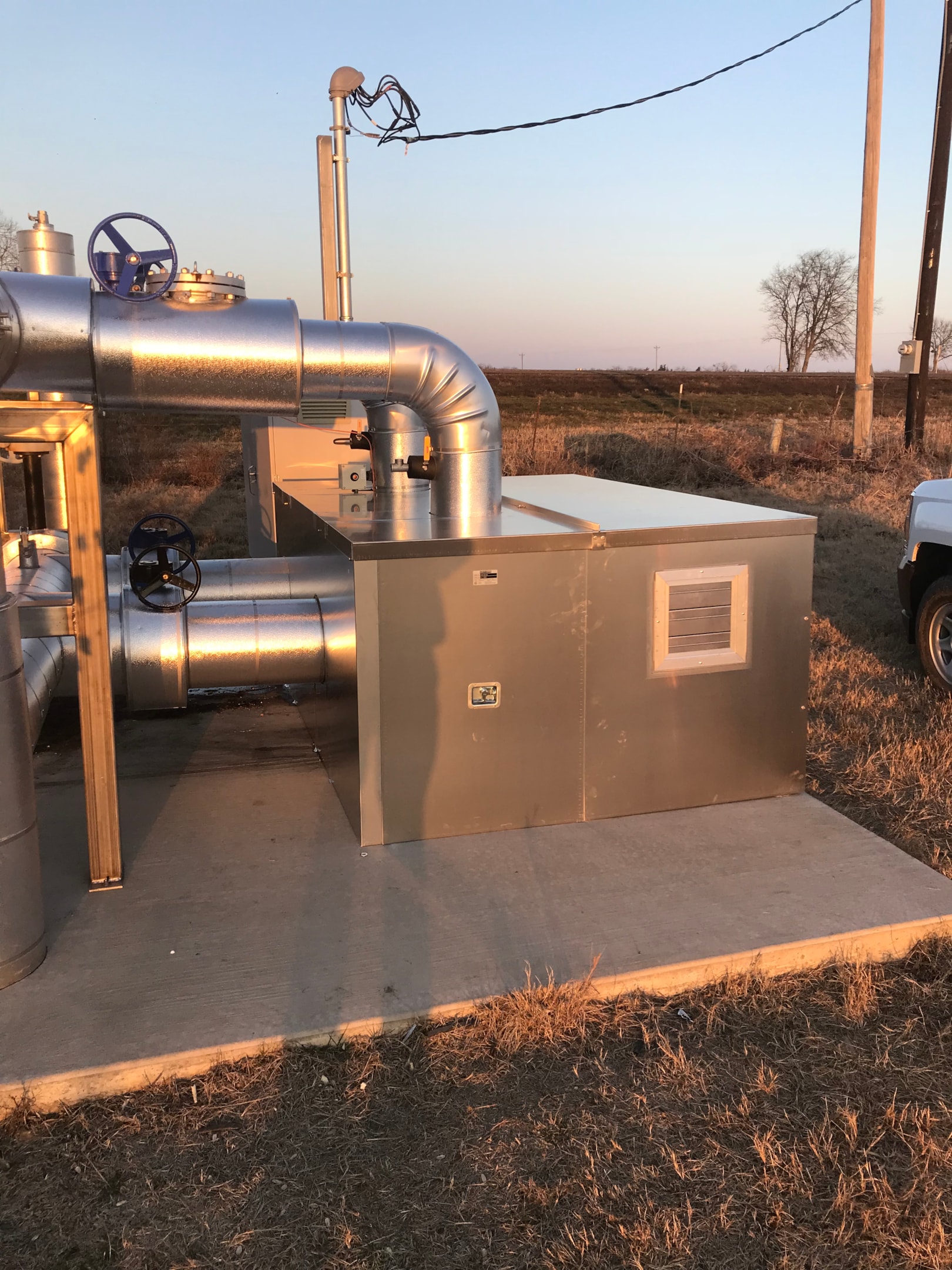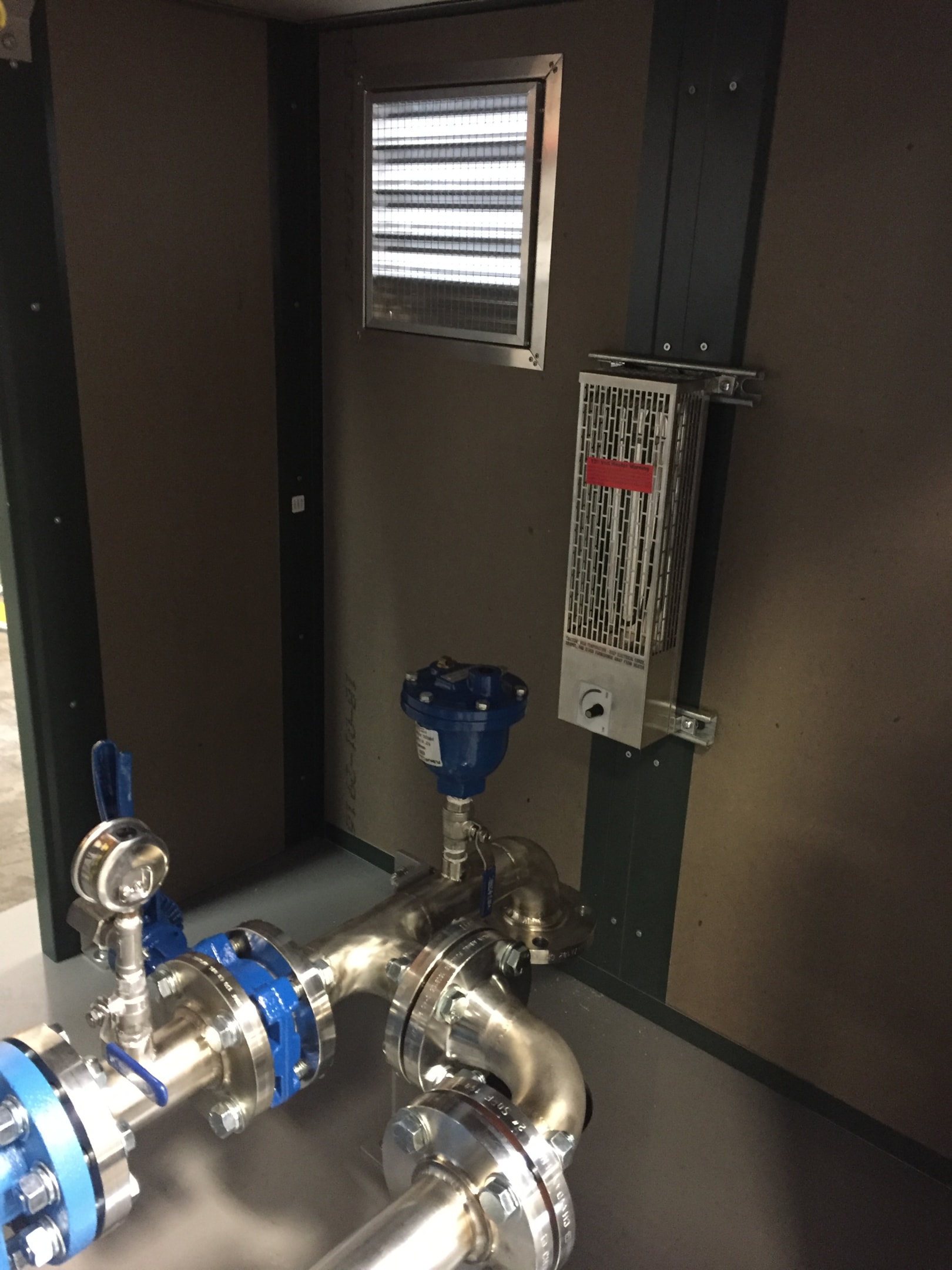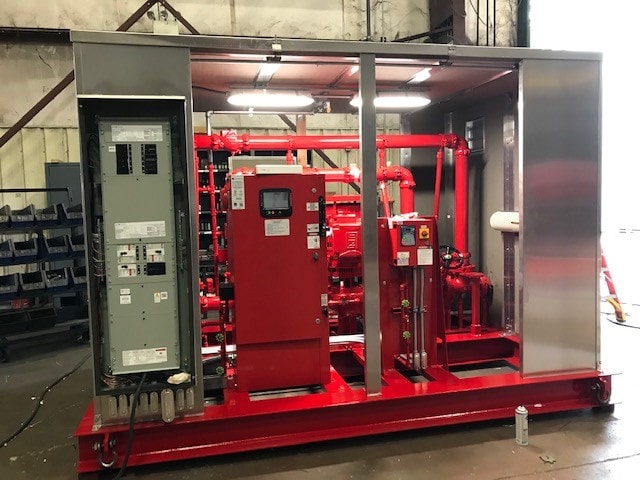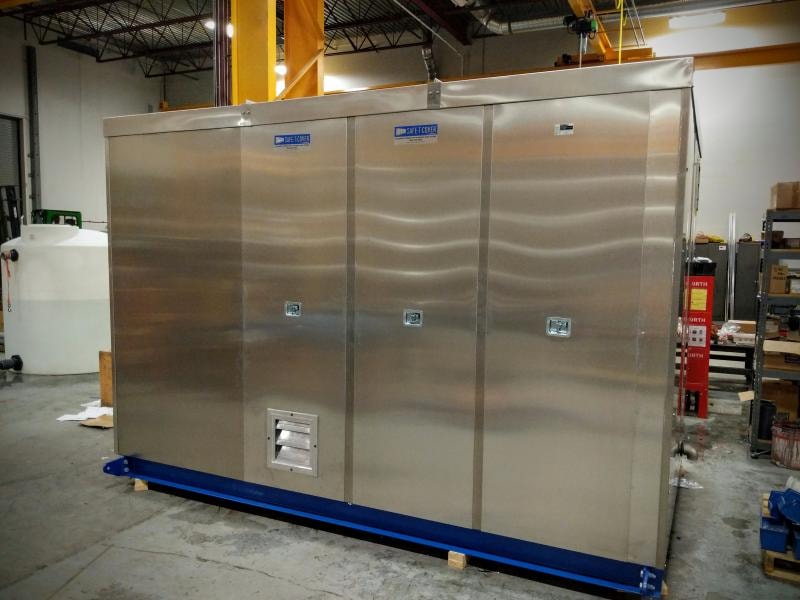Why do you need a backflow pump cover? Pump covers are essential for protecting residential, commercial and industrial pumps from environmental damage, vandalism and extreme temperatures. These covers help maintain system performance and prevent overheating or freeze-related failures.
Whether you're dealing with pumps for irrigation, fire suppression or industrial systems, choosing the right enclosure is critical to long-term durability, safety and efficiency. If you’re considering an aluminum pump enclosure for your installation site, we’re here to answer all your pump cover questions.
Table of Contents
How do I choose the right size pump cover?
We can help you find the right size. Whether you’re looking for design advice, material recommendations or want to discuss installation requirements, our pump enclosure experts are ready to help you navigate through the options. Chat on our website or call us at 800-245-6333.
Free Guide: Pump Enclosure Design
Check out our free step-by-step guide, How To Design and Buy a Pump Enclosure. This checklist will help you understand the important factors to consider when designing your pump cover, including material selection, dimensions, clearance, mounting options and more.
Custom covers can be designed to meet the specific requirements of your pump or equipment, ensuring the best possible protection against environmental conditions, wear and tear. Contact us at Safe-T-Cover and we'll quote you on your cover’s size, material, access features, ventilation and security options, all in line with your operational goals.
How do I run the supply and return piping from the pump cover?
When designing and installing supply and return piping for an enclosed pump, plan the piping penetrations carefully. These penetrations allow the fluid (typically water) to flow to and from the pump while maintaining the enclosure's integrity.

Key Step Summary:
-
Drill the holes for the supply and return piping penetrations on-site, aligning them with the pump’s connections.
-
Seal the gaps around the piping using expanding foam or gaskets to retain heat and prevent environmental damage.
-
Ensure the installation accounts for insulation, vibration dampening and drainage needs.
By following these guidelines, you’ll ensure that the piping is securely integrated into the pump enclosure while maintaining its effectiveness and durability over time.
1. Plan Piping Penetrations Early
Before installation, decide where the supply and return lines will penetrate the enclosure. These locations should align with the pump’s inlet and outlet connections, as well as any other equipment that may require fluid input or output. The goal is to ensure smooth flow without unnecessary bends or restrictions in the piping. Proper planning affects long-term performance.
Ensure enough space around the penetration for any necessary fittings, valves or seals, and that the piping will not be obstructed by other internal components of the enclosure. Clearance is a practical design consideration that benefits future maintenance.
2. Drilling Piping Penetrations On-Site
It's generally recommended to drill the holes for the piping penetrations at the project site. This approach has several advantages:
-
Precise Customization: It allows the contractor to drill the holes exactly where they are needed based on the layout and specific requirements of the installation. This ensures precise alignment with the pump and piping.
-
Flexibility: On-site drilling accounts for any last-minute adjustments or changes to the piping configuration.
Tools Needed: Use appropriate drilling tools for the material of the enclosure (e.g., stainless steel or aluminum). A hole saw or drill bit designed for metal is typically used. Choosing the right tools preserves material strength and form.
3. Sealing Around the Piping
Once the penetrations are made, seal the gaps around the piping where it intersects with the enclosure. Expanding foam is a good option for sealing these gaps. It expands to fill the space around the piping and forms a solid, insulating barrier. Be sure to use a fire-resistant foam if the pump enclosure is for fire protection or industrial applications.
For a cleaner and more controlled seal, gasket material or rubber seals can be used around the pipe penetrations, ensuring a tight, secure seal that prevents leaks or air gaps.
Sealing helps:
-
Heat Retention: If the system requires thermal management, sealing the gaps will help to retain heat inside the enclosure, which is particularly useful in cold environments or when dealing with fluids that need to be kept at a certain temperature.
-
Prevent Leaks: A proper seal will prevent air, moisture or contaminants from entering the enclosure, which is crucial for maintaining equipment efficiency and protecting internal components from environmental damage.
4. Additional Considerations for Piping Installations
-
Insulation: If the system needs to retain heat or prevent condensation, consider wrapping the piping in insulation before feeding it through the penetrations. This is particularly important in systems where temperature control is critical to performance.
-
Drainage and Overflow: If the pump or system might experience leaks or overflow, ensure the piping design allows for proper drainage. This could include integrating a drain flap in an access panel. This is especially critical at sites with limited external runoff.
-
Vibration Dampening: Pumps can create vibrations, which can affect the integrity of the piping over time. Consider using vibration-dampening materials or brackets to support the piping near the penetration point and prevent wear or damage to both the piping and the enclosure.
What’s the best way to remove heat from a pump cover?
Pumps naturally produce heat, and depending on location, it can get very hot inside the enclosure. It's important to counteract heat so it doesn't damage equipment like electronic control panels or affect overall system performance.
We recommend installing a louver and fan on opposite sides of the enclosure to create cross-ventilation. This setup draws cooler outside air in, moves it across the pumps and equipment, and exhausts the warm air out the other side, helping to regulate internal temperature and prevent overheating.
The size of your enclosure and pump will determine the number of louvers needed. Safe-T-Cover can help you determine the louver and fan number and sizes.
What if I need to heat my pump enclosure?
If your pump does not run continuously and you're in a cold climate or have cold winters, you'll need a heater.
Pumps may also push fluids that are more viscous than others. Heating the interior of your enclosure helps keep fluids warm, which helps increase the efficiency of the pump. This is especially useful for performance in colder months.

There are many available options for specific types of heaters, including:
-
Explosion-proof
-
Wall-mounted
-
Slab-mounted
The size of your enclosure will determine things like:
-
Insulation thickness
-
Wattage or voltage
-
Heater placement
For most cases, mounting the heater on a slab makes good sense for pump applications. Heaters can also be installed on the wall. These are typically sold as part of a complete custom package.
Can I access my pump for maintenance and replacement?
Yes, so long as you design your enclosure for easy access. Safe-T-Cover's modular enclosures promote ready pump accessibility.
Here are some pump cover design considerations:
Removable or Hinged Access Panels
For equipment that requires regular inspection or maintenance, like fire pumps and booster pumps, removable or hinged access panels are a great solution. These panels should be strategically placed to allow technicians to perform tasks without needing to disassemble the entire enclosure. Placing them on the front or sides of the enclosure offers convenient access, with a bonus of reducing maintenance costs.

Wide and Tall Doorways for Larger Equipment
If your enclosure contains large equipment, make sure the doorways are sufficiently sized to accommodate the equipment. Consider the dimensions of the equipment you're likely to replace and the space needed to maneuver it in and out. This may mean designing doors that are larger than standard size and ensuring there’s adequate clearance for equipment removal or replacement. Safe-T-Cover enclosure roof panels are easily removed if the equipment needs to be lifted from the pump cover.
Lockable Doors and Panels
Security is a non-negotiable. All access points should be lockable to prevent unauthorized access. This lets qualified personnel perform maintenance or replacement tasks while maintaining the safety and security of equipment inside the enclosure.
Consider Future Maintenance Needs
When designing the pump enclosure, plan for long-term maintenance needs, including the possibility of replacing aging or malfunctioning equipment. The design should prioritize easy access and keep in mind potential changes in the equipment over time (e.g., different models or larger units requiring more space).
Can pump enclosures be easily mounted to a skid?

Yes, pump enclosures can indeed be easily mounted to a skid, and it’s a common practice, especially for applications where portability, ease of installation and structural integrity are important.
When planning to mount an enclosure to a skid, consider the following:
1. Use of Corrosion-Resistant Materials
Aluminum or other corrosion-resistant materials are ideal choices for both the enclosure and skid. These materials are particularly important in outdoor or harsh environments where exposure to water, chemicals or moisture is common.
In addition to material choice, coatings like kynar, powder coating and galvanization can be applied to prevent corrosion, increasing the lifespan of both the enclosure and the skid.
2. Dimensions of the Skid and Enclosure
Precise skid dimensions (length, width and height) ensure that the enclosure is designed to fit securely on the skid without issues during installation or operation. It also ensures that any necessary mounting holes or brackets can be aligned properly. Also, consider the clearance needed inside the enclosure for pump maintenance and inspection.
How do I install my pump cover?
Follow the manufacturer's instructions. If you've ordered a custom enclosure from Safe-T-Cover, they're sold as a complete package, meaning we provide not just the cover itself, but also all the necessary components for installation. That means hardware and instructions, plus a customer support team that can answer your installation questions.
Looking for a customized solution for your pump and equipment?
Custom covers can be designed to meet the specific requirements of your pump or equipment, ensuring the best possible protection against environmental factors and normal wear and tear.
Contact us at Safe-T-Cover and we'll quote you on your aluminum enclosure's size, material, access features, ventilation and security options, all in line with your operational goals.




